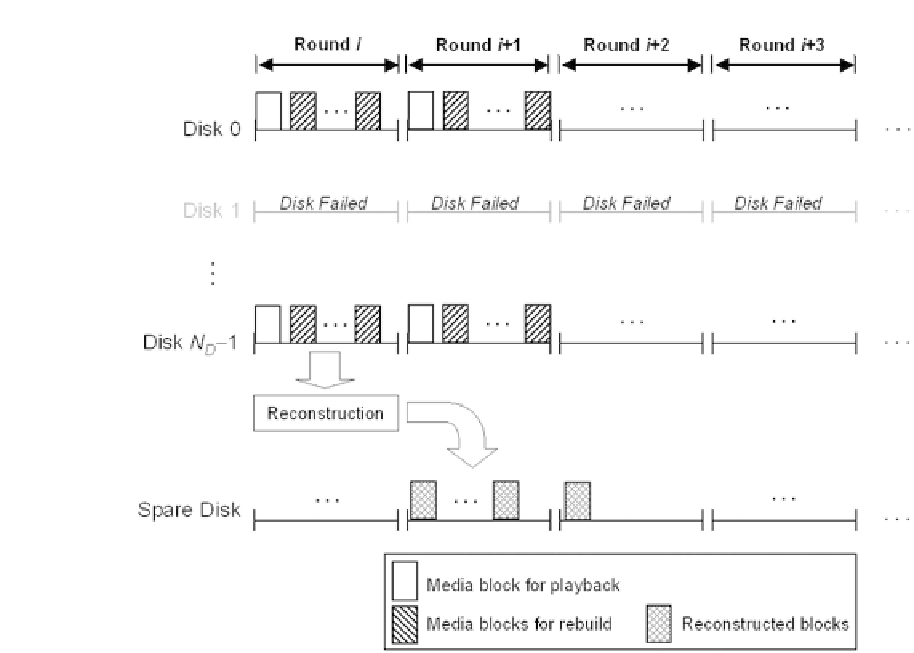Information Technology Reference
In-Depth Information
Figure 5.4
Block-based automatic data rebuild.
where the first term is the buffer requirement for retrieval and the second term is the buffer
requirement for storing the reconstructed media data blocks. The multiplication factor
K
represents the maximum number of blocks that can be retrieved in a round for rebuild. The
total buffer requirement can then be computed from the sum of equations (5.2) and (5.25):
B
sum
=
B
p
+
B
r
=
K
(3
N
D
−
1)
Q
(5.26)
It may occur to the reader that while simple in implementation, this periodic write scheduler
is inefficient in buffer usage because reconstructed blocks are buffered for up to one cycle
before writing to the spare disk. However, we discover that a simple buffer-sharing scheme
will completely eliminate the additional buffer requirement.
Specifically, we notice that the server would need fewer buffers for playback and more
buffers for rebuild when the utilization is low, and vice versa. This motivates us to investigate
buffer-sharing between the retrieval process and the rebuild process. Specifically, the server
can allocate a pool of, say,
N
share
buffers (each
Q
bytes) during initialization and then allocate
the buffers to the retrieval process and the rebuild process in an on-demand manner.








Search WWH ::

Custom Search